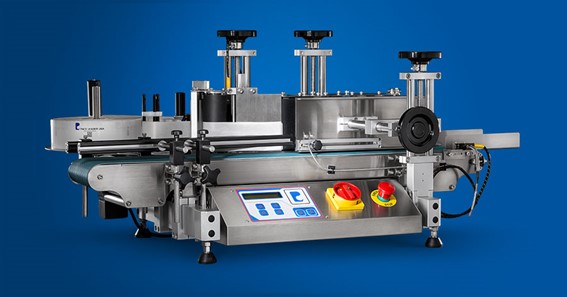What is a wraparound labelling machine?
One aspect of products from a wide variety of industries is common: Labelling requirements make it necessary to use the available space on the products effectively. A wraparound label, which is also known as wraparound labelling, is particularly suitable for cylindrical containers, as the product is completely or partially wrapped while the label runs around the circumference.
There are many uses for wraparound labelling, including labelling pharmaceutical products, tablet tubes, inhalers, cosmetics, household goods in a wide variety of formats, food labels from jam jars to cereals in cans, cartridges, and chemical products. The bottle labelling application of rotary machines is highly prevalent because bottles are usually wrapped around in large quantities.
How have labelling has changed over time
The topic could probably be traced back thousands of years, to the times of the ancient civilisations. This can be seen in the fact that wine was produced in Greece around 6,000 years ago. Tutankhamun died in 1352BC and was buried with his favourite wine, the containers containing information about the type of wine, the year it was made, and where it was produced. In technical terms, it is a label. Printed on handmade paper by a wooden press, the labels were then glued to the products. In the 1800s, adhesive labels were first used – paper labels with adhesive gum on the back that you had to lick to activate.
In the beginning, drug labels explained how to take the medicine, at what times, and how much to take. Labels are still an essential part of pharmacies. In the past, coloured labels had to be painted by hand, which was extremely time consuming, so it was only available for exclusive products. By the middle of the 1800s, colour printing improved significantly, and manufacturers realized the need to market their products creatively through their labels.
Click here – What You Should Look For in a Blog Management Service?
How do modern wraparound labelling machines work?
Filling and capping machines transport products directly to the main conveyor, or they can be manually deposited on it. A product separation wheel or motorised scroll unit spreads the products out, ensuring each product will be detected for reliable labelling. The oval-shaped products come with an optional alignment unit that enables each product to be positioned properly. Using product guides, flat and uniform cylindrical products can be guided and aligned. After the products have been aligned in this manner, they are gripped and held under the hold-down conveyor throughout the entire labelling process.
Once the product is below the hold down conveyor, a photocell detects it. Photocells trigger labelling heads when the product passes the dispensing edges. Labels attached to the object are sealed with foam rollers for a flawless finish.
By mechanically chain-linking the hold-down conveyor to the main conveyor, there is no possibility that the product will run out of sync, so the product will be completely stable when the label is applied. Hold-down conveyors that use a separate motor can sometimes struggle to keep up with the main conveyor, which destabilizes the product.
As with everything in the modern society, the advancement of engineering and web application design has resulted in better quality machinery and label printing software – taking the art of wraparound labels to new heights.
Click here – How much time is required for Demat account activation
To Know Some Great Stuff Do Visit EagerClub
To Know Some Great Stuff Do Visit EarthCycle
To Know Some Great Stuff Do Visit EkSankalpJob
